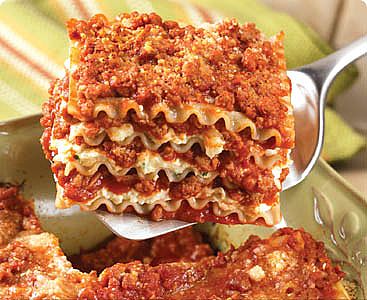How Exercise Burns Body Fat
Not long ago I found myself in a situation you can probably identify with. My family and I were on a weekend trip with another family, and for breakfast I made myself a four-egg omelet. I fixed a bowl of fruit as a side and then sat down to eat as our friends looked on in horror. One of them asked, politely, why I ate that much. "Because I'm hungry," I said between bites. If I didn't eat this much now, I explained, I'd be crazy hungry later.
But what they really wanted to know was how I could get away with eating that much. I was the leanest adult in the room—and yet I ate more than the others. Logically, people who are lean must eat less. Right? Otherwise they wouldn't be lean. What could be simpler?
That's what Bernard Gutin, Ph.D., believed back in 2000, when he began his study of 800 teenagers. The goal was to look at the relationship of diet and physical activity to risk factors for cardiovascular disease. "We thought exercise and diet would play a role by making kids less likely to get fat and less likely to develop risk factors for these adult diseases," he says. "We assumed the kids who ate the most would be the fattest." But they weren't.
Instead, Gutin and his team at the Medical College of Georgia found that the kids who ate the most were typically the leanest. In some cases, the fattest kids actually ate less than their lean counterparts. Naturally, the researchers assumed that physical activity would explain the discrepancy. "We thought the leanest kids must be exercising a lot more; so even though they were eating more, they were also moving more," Gutin says.
But that wasn't entirely true either. Total physical activity—the amount of time the kids spent up and moving—wasn't a strong predictor of which kids would be leaner than others.
What mattered was how much vigorous exercise they did—how much time they spent running, jumping, lifting, and playing sports.
THIS SEEMED IMPROBABLE AT FIRST. BUT EVEN a few minutes a day of high-effort exercise was enough to separate the leanest teenagers from the fattest. How could that be?
But before we talk about why this matters, let's start with an important qualifier: The leanest kids didn't necessarily weigh less than the fattest ones. But they did have better body composition—that is, more muscle and bone, and less fat. And the only factor that explains it is the amount of exercise that had them moving fast, elevating their heart rate, and forcing their muscles to work hard.
Now here's why this article is billed as a weight-loss story, not a fitness piece: Sometime in the late 20th century, health and nutrition experts decided that most people weigh more than they should. An estimated 500 million adults are now considered obese, and that's just in Cleveland. (Just kidding, Cleveland; it's the worldwide estimate.) They tell us we're all overweight because we eat more than we should. The obvious solution seemed to be: Eat less, and then weigh less as a result.
You're considered overweight if your body mass index, or BMI, is between 25 and 29.9. For a 5'10" guy, the overweight range is 174 to 208 pounds. Anything more is classified as obese. If you're an athlete, a serious lifter, or just a guy who's active and not obviously thin, you're probably "overweight." Chances are you've been told as much by a well-meaning doctor.
And yet according to a 2013 CDC review, people who are "overweight" actually have a lower risk of mortality than people who fall in the normal BMI range. The researchers were at a loss to explain why heavier people might live longer. One possibility is that their higher percentage of lean mass helps make them stronger. And there's plenty of evidence that stronger people live longer and have lower risks of cancer and heart disease. In fact, muscular strength is connected with reduced risks of almost every health condition associated with cardiovascular disease.
Most important, stronger people tend to have less body fat generally and less belly fat specifically. In other words, they're leaner not because they weigh less but because they have more muscle mass. Once you have that muscle, you can use it to attack the fat that covers it up.
RELATED VIDEO:
ANOTHER REASON TO FOCUS ON EXERCISE first when managing your weight has to do with two competing systems in your brain. There's the reflexive system—the "default responder," which we share with our evolutionary cousins, the great apes. It's the "see a doughnut, eat a doughnut" portion of the brain. When we have unlimited access to high-calorie, low-nutrient food, this part of our brain would put any of us into a diabetic coma if left unchecked.
That's why we need to strengthen its opposite, the reflective system. This one manages impulses, keeps us focused on our goals, and is unique to humans. Self-control is a lot like your muscular system. You can make it stronger. But like your muscles, it must be trained in a way that builds it up instead of breaking it down.
The best place to start is with a solid exercise program. "It's not fitness to burn calories," says George L. Blackburn, M.D., Ph.D., director of the Center for the Study of Nutrition Medicine at Beth Israel Deaconess Medical Center in Boston. "Even sleep burns calories. It's fitness to be fit."
Dr. Blackburn is one of the authors of a recent study published in Obesity Reviews that describes the many benefits of exercise beyond the modest effect it has on your weight:
- Stress reduction
- Improved insulin sensitivity and other hormonal responses to food
- An overall sense of competence and accomplishment
- Motivation to improve other behaviors
Those last two tie together the psychological and physiological benefits of exercise, both of which are crucial to anyone who's struggling to stick with a workout program. You won't reap any of the rewards we're talking about if you can't bring yourself to train in the first place.
That brings us back to Gutin, who at age 79 has spent decades studying exercise. (He's a professor emeritus at both Columbia University and the Medical College of Georgia.) And he still isn't quite sure what to make of the results of his own research. But he has a theory.
The human body is loaded with stem cells; these can become different types of cells, depending on what the body needs and what it tells them to become. In lab animals, the combination of exercise plus food triggered stem cells in the bone marrow to transform into lean tissue—muscle. Overfed mice that were given an exercise stimulus created more lean tissue. In other words, a higher number of their stem cells turned into muscle and bone. But when the mice were overfed and didn't exercise, more of their stem cells turned into fat.
We can't say this is exactly what happens in humans, especially adults. (Even in rodents, the exercise benefit isn't realized if the animals are already obese.) But with kids, something very much like this seems to take place. "Kids who do a lot of vigorous physical activity develop less fat and more lean tissue," Gutin says.
In adults, we know that satellite cells—stem cells found in muscle tissue—can become new muscle cells at any age, given the right stimulus. And one good stimulus, Gutin says, would be to work to momentary muscle failure when you lift. That way, without having to guess, you know you're generating a lot of force with your muscles. This in turn stresses your connective tissues, which then strain your bones. That should be enough to push some cells to become new lean tissue, and perhaps also prevent some cells from becoming fat.
Strength training isn't the only way to deploy muscle in the righteous war on fat. Your heart is also a muscle, and it may be the most potent weapon you have. Back in 1990, a team of researchers overfed a group of healthy, normal-weight young men and limited their physical activity during a 100-day period. The group's weight gain averaged nearly 18 pounds—about two-thirds of it fat and a third muscle. But there were huge disparities among the results. In a recent study published in the International Journal of Obesity, the researchers analyzed the same data and determined that prior to the overfeeding, those with the highest VO2 max (a measure of aerobic power and fitness) gained the least total weight and the least fat.
The best and fastest way to improve your VO2 max is with short bursts of high-effort activity—such as sprints, calisthenics, and sled pushes. That's exactly the strategy Gutin found to be the key to lean, healthy bodies among the young people in his study.
BEFORE YOU SET OUT TO TRAIN HARD and fast, let's circle back to my breakfast. As I explained to my friends, I ate more than they did because I was hungrier. And I was hungrier because of the way I train and because of the metabolic demands of being relatively lean and fit.
But no amount of exercise gives you a lifetime pass to eat whatever you want. It simply allows you to eat what you need without worrying that an extra bite here or there will go straight to your gut.
And if some of it does? Well, you already have the tools you need to take it off. If you feed your muscles, they'll repay the favor by starving your fat.
- Prev:Holiday Diet Strategies
- Next:Text to Stay Thin
-
You’re Making Her Fat!
We know you mean well when you tell a fat friend or family member to s
-
Family Weight Loss Success Stories
So far, so good. The Reeves family is battling bulge, but its not over
-
Abs Diet shoulder exercises
Broaden your upper body and improve your backhand in 4 weeks. When tra
-
Weight Loss: Abs Diet Serving Sizes
Doling out food portions for a recipe or a diet plan is always a craps
-
TNT Diet: Chris Weight Loss Exercise Plans
The following program has been designed by Craig Ballantyne, Cert
-
Abs Diet- Weight Loss and BMI
For years, obesity researchers used a standard called the body-mass in
- DON'T MISS
- Bet on Weight Loss
- Does Protein Guard Against Weight Gain?
- Is Your Environment Making You Fat?
- How To Eat 63 Percent Fewer Calories
- Weight Loss News: Eyesight, Yogurt and Kids
- Check out the Abs Diet weight loss success story of Richard Langdon,
- Smoking and Weight Loss
- Is SodaStream Healthy?
- Abs Diet: Muscle-Building Meats
- Abs Diet: Stress and Comfort Foods




